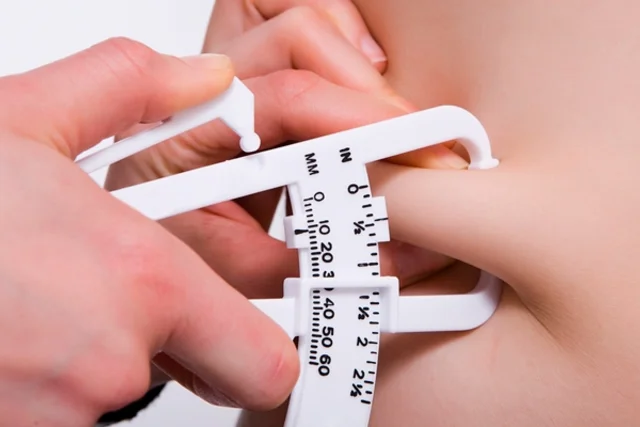Stepping on a scale tells you your weight, but it doesn’t reveal the full picture of your health. Your weight can be influenced by various factors, including muscle mass, bone density, and body fat percentage. Knowing your body composition, the breakdown of these components, is crucial for understanding your overall health and making informed decisions about your fitness and nutrition goals. That’s where a body composition test comes in. Let’s explore what this test entails and why it’s essential for your health journey.
Book Your Body Fat Scan NYC Today!

Introduction to Body Composition Testing
Definition of Body Composition Testing: Body composition testing is a non-invasive procedure that measures the different components of your body, such as muscle mass, fat mass, water weight, and bone mineral density. This information provides a more comprehensive understanding of your health than simply relying on your weight alone.
Importance of Knowing Body Composition Beyond Weight: Weight is a single data point that doesn’t differentiate between muscle and fat. Two individuals with the same weight could have vastly different body compositions, leading to significant differences in health, fitness, and overall well-being.
Differences Between Body Weight and Body Composition:
- Body weight: Represents the total weight of your entire body, including muscle, fat, bones, water, and organs.
- Body composition: Describes the proportion of different components within your body, such as the percentage of muscle mass, fat mass, water weight, and bone mineral density.
Components of Body Composition
Explanation of the Main Components:
- Muscle mass: Muscle tissue is essential for movement, strength, metabolism, and overall health.
- Body fat: Fat serves as an energy source, insulates the body, and provides protection for organs. However, excessive body fat can increase the risk of health issues.
- Water weight: Water plays a crucial role in various bodily functions, including temperature regulation, nutrient transport, and waste removal.
- Bone mineral density: Bone density reflects the strength and integrity of your bones, influencing the risk of osteoporosis and fractures.
How Each Component Affects General Health:
- Muscle mass: Adequate muscle mass supports healthy metabolism, weight management, bone health, and overall physical function.
- Body fat: A healthy balance of body fat is essential for energy storage, hormone production, and organ protection. However, excessive body fat can increase the risk of heart disease, stroke, type 2 diabetes, and certain types of cancer.
- Water weight: Proper hydration is crucial for maintaining body temperature, transporting nutrients, removing waste, and supporting various bodily functions.
- Bone mineral density: Maintaining strong bones is essential for mobility, balance, and reducing the risk of osteoporosis and fractures.
Types of Body Composition Tests
Bioelectrical Impedance Analysis (BIA):
- How it works: BIA measures the electrical conductivity of your body tissues. Different tissues conduct electricity differently, allowing for an estimation of body composition.
- What it measures: BIA primarily estimates muscle mass, fat mass, and water weight.
Dual-Energy X-ray Absorptiometry (DEXA):
- Precision and application: DEXA is considered the gold standard for body composition assessment, providing highly accurate measurements of body fat, muscle mass, bone mineral density, and bone distribution.
- Process: DEXA involves lying on a low-radiation X-ray machine that scans your body.
Hydrostatic Weighing:
- Process and accuracy: Hydrostatic weighing involves underwater weighing to determine body density. Body fat percentage is then calculated based on the principle that fat is less dense than water.
- Accuracy: Hydrostatic weighing is considered a highly accurate method, but it requires specialized equipment and trained personnel.
Air Displacement Plethysmography (Bod Pod):
- How it is performed: Bod Pod utilizes air displacement to measure body volume. Body fat percentage is then calculated based on the principle that fat displaces more air than muscle.
- Benefits: Bod Pod is a relatively quick, non-invasive, and comfortable method.
Skinfold Measurements:
- Method and reliability: Skinfold measurements involve using calipers to pinch and measure the thickness of skin folds at various body sites. Body fat percentage is then estimated using predictive equations.
- Reliability: Skinfold measurements can be less accurate than other methods, especially with higher body fat percentages, but they are portable and inexpensive.
How to Prepare for a Body Composition Test
Tips to Prepare Before the Test:
- Hydrate adequately: Drink plenty of water in the days leading up to the test to ensure proper hydration, which can affect the accuracy of some methods.
- Avoid strenuous exercise: Refrain from intense exercise 24-48 hours before the test, as this can temporarily alter body water distribution.
- Fasting: Some tests may require fasting for a few hours beforehand to ensure accurate results.
Additional Preparation Tips:
- Consistent Timing: Schedule your test at the same time of day for consistency.
- Wear Light Clothing: Light, tight-fitting clothing can help provide more accurate measurements.
- Avoid Alcohol and Caffeine: These substances can affect hydration and should be avoided before testing.
Conclusion: The Importance of Body Composition Testing
Understanding your body composition offers a comprehensive view of your health beyond just your weight. By measuring the different components of your body, you can make informed decisions about your fitness and nutrition goals. Whether you choose BIA, DEXA, hydrostatic weighing, Bod Pod, or skinfold measurements, knowing your body composition can help you achieve a healthier and more balanced lifestyle.